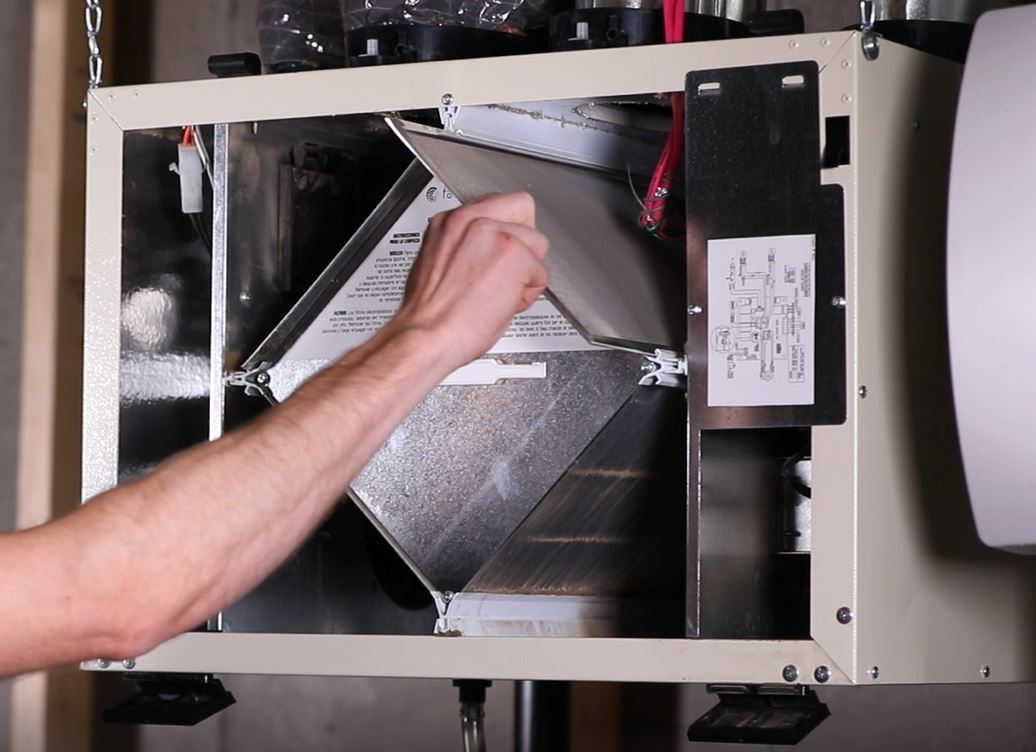Last Updated on December 14, 2023
Today, we’re diving into explaining one of your home’s most important systems. Find out exactly what an HRV system is, the benefits of a home HRV system and how they work.

What is an HRV System?
An HRV, or Heat Recovery Ventilation System, is a home system that essentially works to regulate the quality of air in your home.
Acting as the “lungs” of the home, the HRV system not only replaces your home’s stale indoor air with fresh, filtered air from outside, but also helps to regulate condensation, temperature and humidity in a sense.
This prevents your home from becoming too cold and damp due to poor ventilation and reduces the presence of condensation, mould, odours and even dust mites.
HRV systems also contain filters that keep particulates such as pollen or dust, from entering your home.
Because of it’s ability to reduce condensation in the home, it ensures a drier home, which is more efficiently heated and cooled. This efficiency means that in the long run, homeowners end up saving money on heating and cooling expenses.
While it’s true that your HRV system requires energy to run, this energy consumption is easily offset by the heat recovered from the exhaust air. Airtight homes equipped with HRV systems will also have substantially lower energy costs per year than having ventilation without heat recovery.
Benefits of an HRV System
There’s no question that there are a number of important benefits to the HRV system hard at work in your home, including:
- continuous, clean fresh air, which is especially important for those with respiratory issues
- energy-efficiency
- reduced condensation in your home
- low maintenance required
HRV vs ERV
HRV and ERV systems are just about the same thing, except that ERV systems actually dehumidify the fresh, incoming air.
How Do HRV Systems Work?
- First, fans are installed.
- While it’s working, one fan draws the warm, stale and polluted air from the living areas of your home, through the HRV system, then releases it outside.
- The second fan then draws a continuous stream of cool, fresh air through the system and distributes it throughout your home.
- As the warm air being expelled moves through the HRV system and passes the cool fresh air being drawn in, heat is being transferred from the outgoing stale air to the incoming fresh air. The core transfers heat from the outgoing stream the same way that the radiator in your car transfers heat from the engines coolant to the outside air. It’s composed of a series of narrow alternating passages through which incoming and outgoing airstreams flow. As the streams move through, heat is transferred from the warm side of each passage to the cold, while the airstreams never mix.
- HRVs can recover up to 70-80% of the heat in the exhaust air – again, saving you money.
How Much Does an HRV System Cost?
On average, an HRV system, installed will run from $2,500 to $3,500, but some costs will vary widely depending on the specific situation.
Another consideration is that HRV systems do consume electricity; though the cost is minimal – around $75/year.
More For Homeowners
How to Clean & Maintain Your Heat Recovery Ventilator (HRV)
ICF Foundations: 3 Important Pros & Cons To Consider
The Ultimate Fall Home Maintenance Checklist
Lincolnberg Master Builder is a home builder in Edmonton, Alberta. In the market? Browse the communities we build in or our new home models.